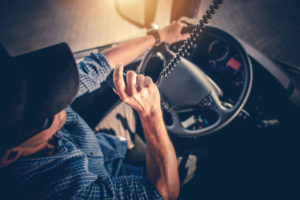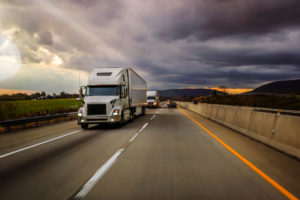By Catharine Richert and Megan Burks, MPRNEWS
When you hear “autonomous vehicles,” you might think of big tech and Tesla. But the state thinks opportunity.
The Minnesota Department of Transportation’s Connected and Automated Vehicles Director, Tara Olds, says she sees the technology as a chance to fix some persistent transportation problems in the state. Olds has helped oversee three pilot projects — in Rochester, Minn., White Bear Lake, Minn. and now Grand Rapids, Minn. — to explore how autonomous vehicles can improve road safety and access to transportation.
The active Grand Rapids project, goMARTI, is designed to give people with disabilities more options and independence by running in the evening and night. Existing services only run during the day.
Olds joined All Things Considered Thursday to share what she’s learning and her vision for autonomous vehicles in the state.
I want to start out with this title of yours: Connected and Automated Vehicles Director. Talk to me a little bit more about the ‘connected‘ part of your title. What does that refer to?
Connected is really looking at how all areas of transportation can connect to things. How can cars connect to one another? How can other vehicles connect to people walking on the street? How might they be able to use information from our roadway signs, or be able to understand what our signal is saying? Is it a green light, or is it a red light? All of these things allow for vehicles to have a better understanding of [their] surrounding, and also really enhances safety.
You have a project in Grand Rapids that’s meant to address another problem, which is access to transportation. Tell us more about that project.
In this community in particular, a number of folks that use mobility devices such as wheelchairs, don’t have the same ability to get around their community due to limited transportation options. And so we were able to use this as a supplement, by operating at different hours than the other services that were offered. So it’s now allowing folks to move around their community in the evening and in the nighttime, allowing them to be more connected to people and have a little bit more autonomy. But I will note that the technology doesn’t always work 100 percent of the time, and that’s why we continue to test it.
So I’m based in Rochester and we had an autonomous vehicle in our city’s downtown for about a year. People were a bit confused about it. They didn’t totally know what it was for, or whether it was safe. So how much public education goes into launching these types of programs?
So that was our project that we called the Med City Mover. That was our first public research demonstration project, so we learned a lot, both from a technology side but also how we can engage with communities.
We had another project that recently just ended in White Bear Lake called Bear Tracks, and it was another shuttle. [Because of what we learned in Rochester, we had] a little bit more community involvement to help educate folks in the area and help us understand where they see opportunities best fit for this.
Both the Med City Mover and Bear Tracks are known as low speed autonomous vehicles. So they operate at, I’d say, a maximum speed of around 12 miles per hour. But sometimes it was operating as low as 3 to 7 miles per hour, depending on what the environment was. It also came to a number of stops in the roadway due to things like leaves [in the roadway], different weather conditions, or even steam rising from manholes, where the sensors were detecting that as a potential obstacle. And so these were designed to be incredibly safe and, with that being said, they kind of create a disruption.
We’ve heard a lot of folks who didn’t like how slow they were. We understand that and recognize that perhaps a downtown urban environment might not be the right place for these vehicles. It might be something more on like a dedicated pathway, where these don’t have the same interruption.
What role do you see Minnesota playing as these technologies develop?
I think one of the biggest opportunities we have is to really look at how winter weather plays a role in this. So much of the testing, so much of the companies [developing autonomous vehicles] are in warm weather states. But Minnesota, along with a number of other Midwest states, has a lot of snow and a lot of cold weather. And quite frankly, we really are encouraging those partners to come and test here in our state, because we believe that if they’re creating transportation solutions that will work here in the summer months, we’d like to see them work all times of the year.
Additionally, we’d like to see how technology can be used in all parts of the state, not just our urban downtown environments, by looking at how they can be used on gravel roadways.
What responsibility do state and other public agencies have in helping to develop these technologies that companies stand to profit from?
The reason that I like to be in this field and really play a role at the state in it is to ensure that the changes that we create for our transportation system really are addressing the needs of our people, not just creating new shiny technologies.

